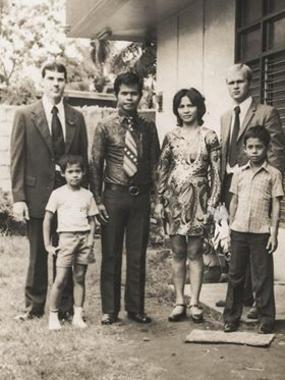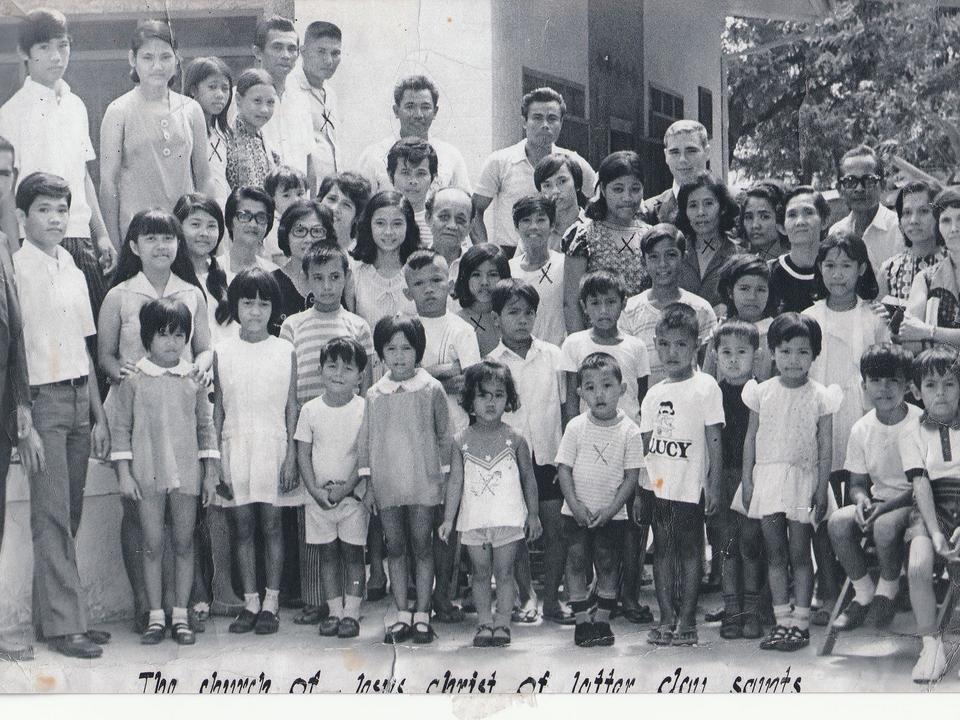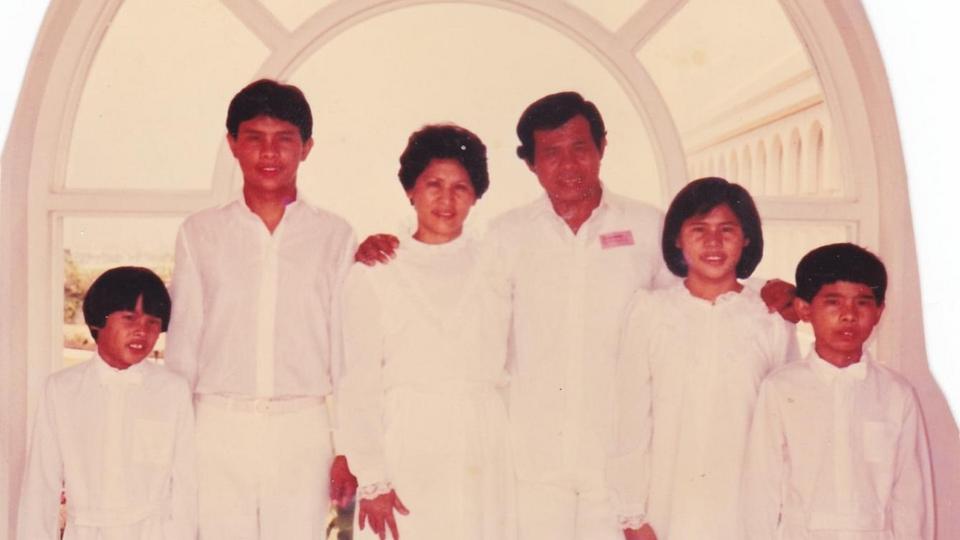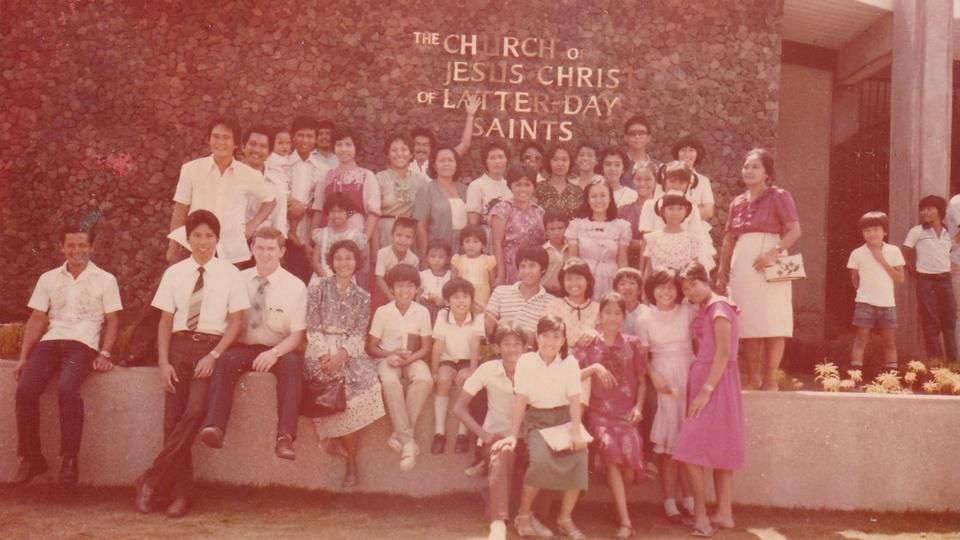From the rich and beautiful Mindanao Island of the Philippines sprang the stalwart, the brave, the true.
When Elder Gordon B. Hinckley, then assistant to the Quorum of the Twelve Apostles of The Church of Jesus Christ of Latter-day Saints, dedicated the Philippines and opened it for missionary work in 1961, who would have thought that the gospel would spread down south to as far as the remotest regions in Mindanao.
Soon after the first foreign missionaries entered Mindanao in their white shirts and ties, they were able to find humble yet receptive Mindanoans who readily embraced the restored gospel of Jesus Christ.
| Temple Square is always beautiful in the springtime. Gardeners work to prepare the ground for General Conference. © 2012 Intellectual Reserve, Inc. All rights reserved. | 1 / 2 |
While pioneering efforts began during tough and lean times, the Lord has blessed His sons and daughters who possessed genuine testimonies of the restored gospel. Many of the early Latter-day Saints in Mindanao remained true and faithful and have passed on their Restored Christian faith down to their descendants to this day.
Such was the story of the Revillo and Mumar Families. Looking back, these Mindanao Latter-day Saint families cannot thank the Lord enough for all the good things that came out because of their courage to ask in faith about Message of Restoration and their obedience to God's commandments.
In this third Faithful and True: Pioneers of the Philippines installment, we share the stories of faith, courage and perseverance of these two pioneer families who, in turn, helped in the rapid growth of the Church in Mindanao.
The Revillo Family
With only one mission in the entire Philippines during the early days of the Church, it was not until 1969 when the first missionaries arrived in General Santo City, South Cotabato.

As missionaries labored to teach the restored gospel of Jesus Christ, two new American missionaries, Elder Mendoza and Elder Tekare, found themselves knocking on the Revillo Family’s door in October 1971 and introduced the message of the Restoration.
The message of the missionaries resonated deep in the heart of the family’s patriarch, Carlos Revillo, Sr., which led him and another individual to the waters of baptism a month after. They were the missionaries’ first baptism.
However, Carlos’ wife, Amparo, and her children were not interested. This prompted the missionaries to stop their lessons. Nevertheless, Amparo knew deep in her heart that the lessons they were teaching her were true.
Even though they stopped meeting with her, she continued to read the Book of Mormon and took the challenge of Prophet Moroni, which was to read, ponder and ask God (Moroni 10:3-5). One night, she knelt down to pray and ask God about the truthfulness of the Book of Mormon as another testament of Jesus Christ. Amparo shared that after praying, she felt something in her heart, telling her that it was true.
She immediately looked for the missionaries and asked them to baptize her. Surprised by her decision, she was given one more week to review the missionary lessons and to finish reading the book. It was on New Year’s Day in 1972, when Amparo entered the waters of baptism.
The Church in General Santos City began with only a small group of six families and nine individuals led by the missionaries, whose apartment served as the meeting house. There was only one district in the whole of Mindanao at that time.
As new members of the Church, the Revillos were obedient to the Lord. Although life was difficult for the family, they paid their tithing honestly. They also remained active in the Church.

As Carlos’s job caused the family to move from one place to another, uprooting the family to different homes, attending Sunday services regularly entailed walking long distances because they could not afford the tricycle fares.
When they lived in Midsayap, Cotabato, they would travel three hours through dangerous areas just so they could attend Sunday services in Cotabato City. When they lived in Glan, Sarangani, the family had to wake up at 4 a.m. on Sundays in order to travel to General Santos City. The Revillo Family also shared that there was a time when they had to cross two rivers because there were no bridges. On some occasions, they slept inside their truck to wait for the water to subside so that they could return home safely. Amparo shared that those were tough times, but their perseverance and sacrifices strengthened their faith all the more.
From the original nine-member headcount of six families in 1971, General Santos, which was once presided over by the missionaries, is now a strong stake (diocese).

Since joining the Church of Jesus Christ of Latter-day Saints, the Revillo family remained faithful. They have also accepted many opportunities to serve in various Church callings without pay. When the group in General Santos City eventually became a branch (small congregation) and turned into a district (small diocese), Carlos Revillo, Sr. was called and sustained as the first Branch President and District President, respectively.
In July 1993, the Revillo couple was called to preside over the Philippines Tacloban Mission. In 2000, he was called as a member of the Area Seventy. The couple also served as full-time missionaries for seven years in the Manila and Cebu Temples.
The Revillo shared that it was a blessing for them to have joined the Church while their children were young. As they grew up in the Church, so did their testimonies. All five sons and a daughter served full-time missions. Two of their sons were called to as mission presidents later in their lives.
Now with 21 grandchildren (nine being returned missionaries) and five great-grandchildren, the husband and wife consider themselves blessed.
Looking back, Amparo’s testimony about sacrifice and service had brought her family to where it is now. “I take comfort in the words of the Pioneer hymn, “Come, come ye saints… all is well, all is well,” she shared.

During their early years in the Church, Carlos Revillo knew that it was their family’s faith in the Savior and His atonement that served as their guiding principle. “This knowledge gives our family strength to face whatever challenges lie ahead,” he testified.
The Mumar Family
As a deep thinker, the mind of Cipriano Mumar was never idle. For years as a minister of an evangelical church in Davao City, Davao del Sur, he would study the Bible, both the Old and New Testaments, extensively.
In one of his studies, Cipriano read the scripture verses found in Ezekiel 37:15-19 in the Old Testament and learned about the Sticks of Judah and Ephraim. He knew that a stick represented a scroll or a book and that the Stick of Judah was the Bible.
As he pondered, however, he asked himself, ‘where is the Stick of Ephraim?’ It took Cipriano many years before he can find the answer to his question, and it was from an unexpected source.

Mumar,Cipriano,Agripina,Davao-City,-son-Manuel-and-Dionisia,-dau.-Cesea-copy.jpg
Cipriano and Agripino Mumar (seated) with their son, Manuel, and daughters, Dionisia and Cesea. © 2020 by Intellectual Reserve, Inc. All rights reserved.One of Cipriano’s good friend whom he had converted to his congregation, Mr. Eutiquio de la Victoria, had a son who went to Manila sometime between 1961 and 1962. It was while the son was there that he met the missionaries of the Church of Jesus Christ and received a copy of the Book of Mormon.
When Eutiquio’s son returned to Davao City, he brought with him copies of the Book of Mormon. One of the copies made its way into the hands of Cipriano Mumar.
Mumar then began reading the Bible and the Book of Mormon, comparing the two extensively. Through his study, he became convinced that the Book of Mormon was the Stick of Ephraim talked about in Ezekiel.
Shortly thereafter, Cipriano wrote to a letter to Church Headquarters addressed to then-President David O. McKay, President of the Church, in Salt Lake City to ask the location of the Church meetinghouse closest to him. The response he received informed him that the nearest chapel was in Japan. That ended Cipriano’s hope of finding out more about the Church and its doctrines.
As missionary work continued to expand across regions in the Philippines, it was on 20 May 1968 that the Church opened Davao City for missionary work. As soon as the first missionaries arrived, which were Elder Bruce Stone and Elder Lorenzo Bott, they did not take long for them to find Cipriano. They began teaching him, including his wife Agripina, the de la Victoria Family, and many others, about the restored gospel of Jesus Christ. Sadly, his good friend Eutiquio passed away before the missionaries arrived in the city.
When the Elders explained to him about the Plan of Salvation, he knew then that The Church of Jesus Christ of Latter-day Saints was Christ’s church restored in modern time; that the Book of Mormon was the Stick of Ephraim mentioned in the Book of Ezekiel; and that Joseph Smith, Jr. was called of God as a prophet.
A little more than five weeks after meeting with the missionaries, Cipriano, Agripina, their eldest son Albert, and another convert, Rafael Buling Sayao, were baptized and confirmed members of the Church.
When Cipriano began looking for answers to his question, little did he know that his search would lead him to learn about the Message of Restoration. And when he found the answers, he took no thought to embrace it.
According to his children, even before his baptism, Cipriano was a man of great faith. After his baptism, he was a stalwart Latter-day Saint throughout the remainder of his life.